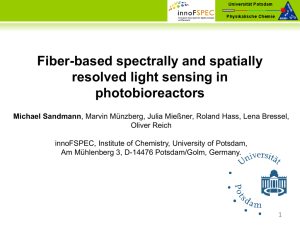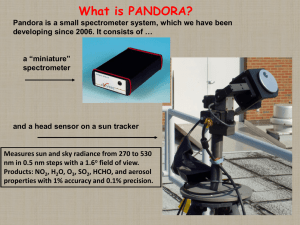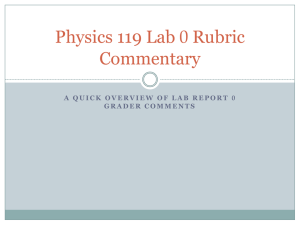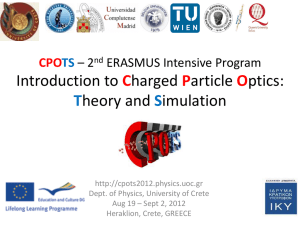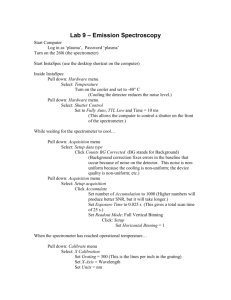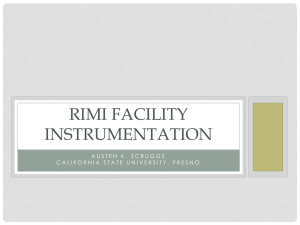Text S2. Principles of Spectrometer Design.
advertisement
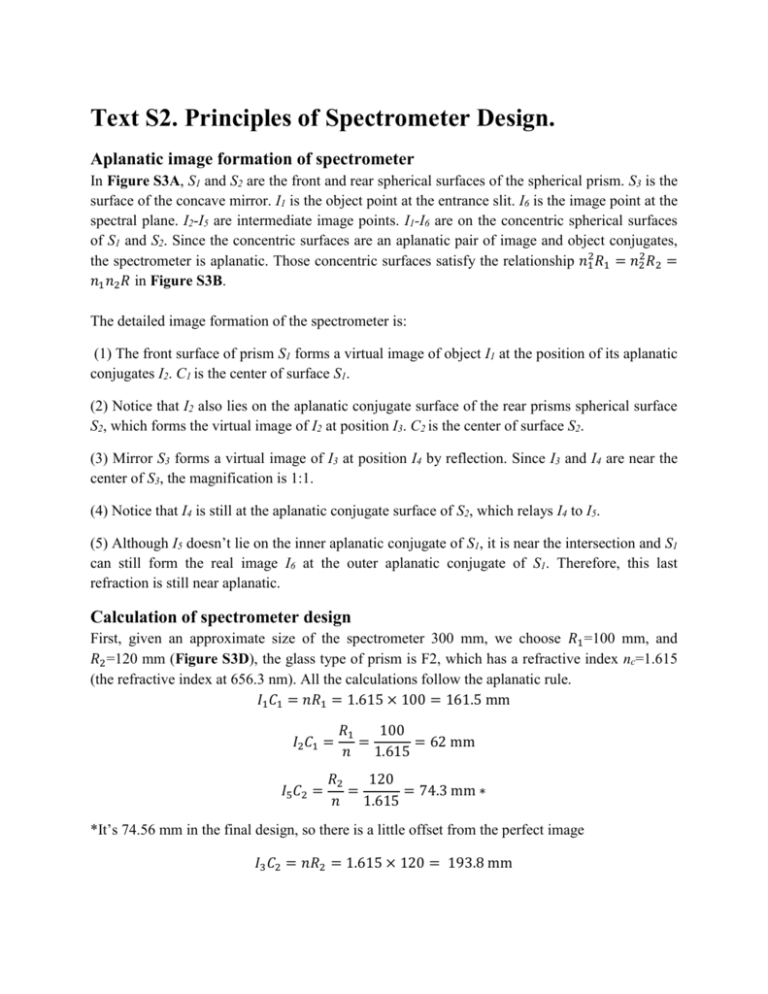
Text S2. Principles of Spectrometer Design. Aplanatic image formation of spectrometer In Figure S3A, S1 and S2 are the front and rear spherical surfaces of the spherical prism. S3 is the surface of the concave mirror. I1 is the object point at the entrance slit. I6 is the image point at the spectral plane. I2-I5 are intermediate image points. I1-I6 are on the concentric spherical surfaces of S1 and S2. Since the concentric surfaces are an aplanatic pair of image and object conjugates, the spectrometer is aplanatic. Those concentric surfaces satisfy the relationship 𝑛12 𝑅1 = 𝑛22 𝑅2 = 𝑛1 𝑛2 𝑅 in Figure S3B. The detailed image formation of the spectrometer is: (1) The front surface of prism S1 forms a virtual image of object I1 at the position of its aplanatic conjugates I2. C1 is the center of surface S1. (2) Notice that I2 also lies on the aplanatic conjugate surface of the rear prisms spherical surface S2, which forms the virtual image of I2 at position I3. C2 is the center of surface S2. (3) Mirror S3 forms a virtual image of I3 at position I4 by reflection. Since I3 and I4 are near the center of S3, the magnification is 1:1. (4) Notice that I4 is still at the aplanatic conjugate surface of S2, which relays I4 to I5. (5) Although I5 doesn’t lie on the inner aplanatic conjugate of S1, it is near the intersection and S1 can still form the real image I6 at the outer aplanatic conjugate of S1. Therefore, this last refraction is still near aplanatic. Calculation of spectrometer design First, given an approximate size of the spectrometer 300 mm, we choose 𝑅1 =100 mm, and 𝑅2 =120 mm (Figure S3D), the glass type of prism is F2, which has a refractive index nc=1.615 (the refractive index at 656.3 nm). All the calculations follow the aplanatic rule. 𝐼1 𝐶1 = 𝑛𝑅1 = 1.615 × 100 = 161.5 mm 𝐼2 𝐶1 = 𝐼5 𝐶2 = 𝑅1 100 = = 62 mm 𝑛 1.615 𝑅2 120 = = 74.3 mm ∗ 𝑛 1.615 *It’s 74.56 mm in the final design, so there is a little offset from the perfect image 𝐼3 𝐶2 = 𝑛𝑅2 = 1.615 × 120 = 193.8 mm 𝑅3 is decided by making I3 near C3. Since I4 should also be on the outer dotted blue circle, C3 should be near the midpoint of I3 and I4. 𝑅3 = 𝐼3 𝐶2 + 𝑅2 + 𝐿, where 𝐿 is an arbitrary distance. For a starting value, we choose 𝐿 = 25 mm which gives 𝑅3 = 338.3 mm (𝑅3 = 336 mm in the final design). These numbers are chosen to be the starting point of the prism spectrometer design in OSLO. The radius and angle of the surfaces S2, S3, and the distance between the three surfaces are adjusted to minimize aberrations (mainly astigmatism, coma, and distortion). The table below shows the dimensions of the optimized spectrometer design in OSLO. Dimensions of each surface in OSLO design Surface object 1 2 3 4 5 image Radius 0.00 -100.00 -120.00 -336.00 -120.00 -100.00 0.00 Units are mm. Thickness 261.50 25.40 36.69 -36.69 -25.4 -259.94 0.00 Glass Air F2 Air Reflect F2 Air Air Notes Tilt 0.00 deg Position then tilt (Y-tilt, clockwise) -12.200 deg Position then tilt (Y-tilt, clockwise) 5.458 deg Same as S2 Same as S1 Position then tilt (Y-tilt, clockwise) -20.879 deg, global coordinate: Y is -17.14, Z is -259.94, origin is at S1
